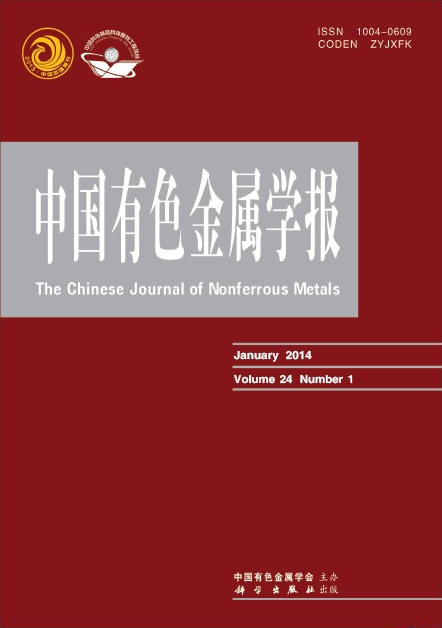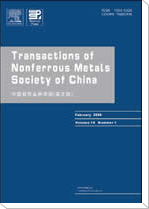(1. 昆明理工大学 冶金与能源工程学院,昆明 650093;
2. 中国科学院 过程工程研究所 湿法冶金清洁生产技术国家工程实验室,北京 100190;
3. 中国科学院 过程工程研究所 绿色过程与工程重点实验室,北京 100190)
摘 要: 以红土镍矿常压酸浸净化液为原料,采用阴离子交换膜与电解结合的方法制备金属镍。分别研究电解液成分、温度、时间、电流密度和pH等因素对阴极电流效率、回收率、能耗以及槽电压的影响。结果表明:含Ni2+溶液浓度为64 g/L、H3BO4浓度为40 g/L、H2SO4浓度为0.1 mol/L、温度为40 ℃、电流密度为 300 A/m2、pH为5.2时,阴极电流效率达到98.47%,能耗为3470 kW·h/t,得到的金属镍纯度达到99.9%以上,能够满足工业上的要求。
关键字: 净化液;阴离子交换膜;电解;镍;电流效率;能耗
(1. Faculty of Metallurgical and Energy Engineering, Kunming University of Science and Technology,
Kunming 650093, China;
2. National Engineering Laboratory for Hydrometallurgical Cleaner Production Technology,
Institute of Process Engineering, Chinese Academy of Sciences, Beijing 100190, China;
3. Key Laboratory of Green Process and Engineering, Institute of Process Engineering,
Chinese Academy of Sciences, Beijing 100190, China)
Abstract:Ni was prepared by the method combining anionexchange membrane with electrolysis using nickel laterite atmospheric acid leaching purifying solution as main raw material. The influences of parameters including the electrolyte composition, temperature, time, current density, pH and other factors on the cathodic current efficiency, recovery rate, energy consumption and cell voltage were explored, respectively. The results indicate that the cathode current efficiency and the energy consumption are 98.47%, 3470 kW·h/t at Ni concentration of 64 g/L, H3BO4 concentration of 40 g/L, H2SO4 concentration of 0.1 mol/L, temperature of 40 ℃, pH of 5.2 and cathode current density of 300 A/m2, respectively,and the purity of this nickel can achieve more than 99.9%, which can meet the industrial requirements.
Key words: purifying solution; anion exchange membrane; electrolysis; Ni; current efficiency; energy consumption


